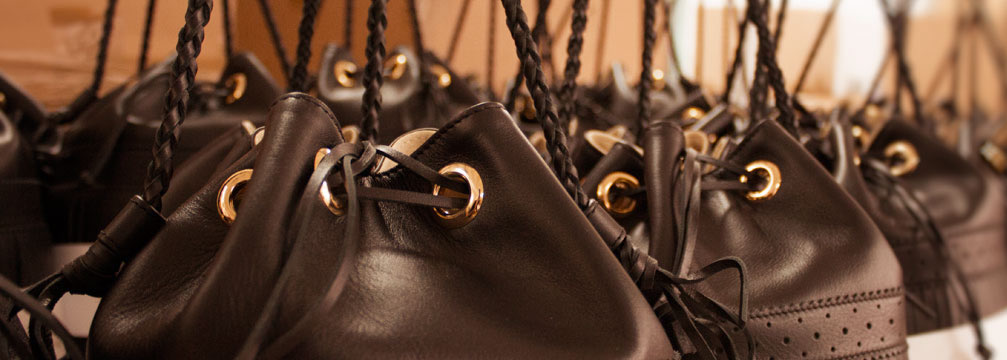Ubrique, a picturesque village in southern Spain that manufactures leather goods for the majority of luxury brands in the world.
The Castilians, the Mudejars of the Kingdom of Granada, who know the techniques of leatherworking and the guadamecíes, the Moors from Granada, as well as the foreign dealers, especially Genoese, meet and share the different traditions of leatherwork in Ubrique. The leather trade in this beautiful white town of the Sierra de Cádiz acquired a fully international character.
In the mid-18th century, leather workshops began to open in Ubrique. Small leather cases to carry tobacco begin to be manufactured almost industrially. Appearing the first leather goods workshops, establishments where the famous leather articles are made in this unique Andalusian town. It is from then on when the fame of Ubrique begins to grow and take recognition throughout the country and beyond its borders. Between the years 1885-1930, a group of great local creators gave notorious fame to the manufacture of Ubrique.
Ubrique, the town that lives by and for the leather goods of the luxury brands.
“You can not ignore Ubrique in the history of Loewe,” said Enrique Loewe four years ago at the opening of the first edition of the Master in Leather Design that the firm’s Foundation organized at the Andalusian Leather Technology Center “Movex”, located in this town, whose relationship with this noble material goes back 20 centuries.
“In the world of ‘premium’ brands, there is a return to craft values.”
The quality standards of Asian factories began to fail and brands began sending orders back to Ubrique. Its industries, hit by the crisis and the relocation to China, now recover its splendor taking as a point of support its historic seal: the artisanal quality of the leather goods.
Such is the importance of this sector, that the association of entrepreneurs of Ubrique has created a school for the genuine learning of this profession. The pretensions of the school are teach and protect the trade of the Ubrique leather goods. This school was created with the support of the City Council in 2014. The school is managed by the association “La piel de Ubrique”.
Some masters of the Leather School, where almost 150 professionals have left, are retired craftsmen who care, above all, for “motivating boys and girls”. For teaching how years ago the apprentices could give a stitch comparable to that of a sewing machine of last generation.
“Ubrique is committed because the processes are still manual and the experience of the trade is paramount.”
In the case of Ubrique, leather is a true, very important culture that begins hundreds of years ago and reaches our days.
Ubrique Leather Museum
The Permanent Exhibition “Hands and Magic in the Leather” is not only a walk through the history of leather goods in Ubrique since its inception, but is part of the ethnographic heritage of this town, thus enriching the cultural heritage of Andalusia and Spain .
“Hands and Magic in the leather” has been an alternative to the tourist offer offered not only Ubrique, but also the “Sierra de Cádiz” and the province as a whole as a destination. Inserted in the Route of the Viewpoints, it is a must stop for the guides to interpret the history and characteristics of “El Convento” and now, their visit to learn a little more about the manufacturing tradition of Ubrique Leather Goods.
This may also interest you:
- The secret supplier to the world’s top designers – Read the article in www.bbc.com
- The leather bag used for the Coronation ceremony in Madrid, by Spanish designer Magrit, was made from Ubrique leather – Read the artcile in www.andalucia.com


